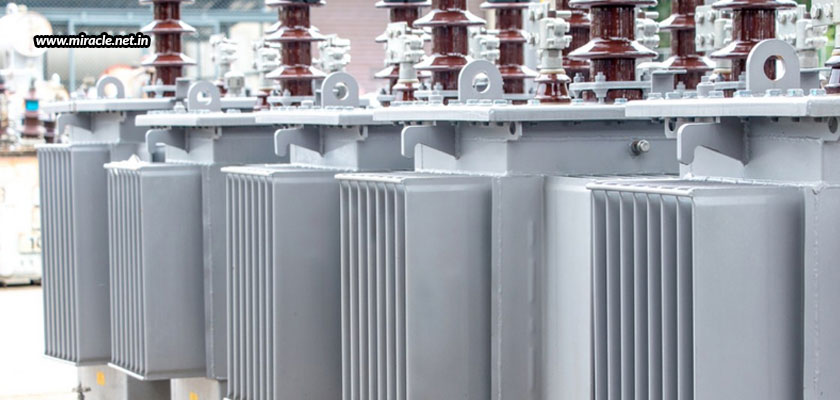Power transformers in India are very important for the reception of safe amounts of electricity within homes, offices, and factories to help appliances perform efficiently. These transformers are divided into two categories – step up and step down transformers. Step up transformers increase the voltage to the required level if it is too low for an appliance to run; while step down transformers reduce the voltage to an acceptable level if there is an increase surge of power supply coming in, so that the appliance is not damaged. Thus, both step up and step down transformers are important.
As much as these transformers are important, equally important is there efficiency and safety. The equipment must work up to the expected performance level, while keeping the operators and others around safe. While it is advisable to call in a technician to inspect your transformers in case of any errors or doubts of error, it is also advised that you keep a regular check on your transformers by making these simple yet important examinations.
- First and foremost, make sure that all the power sources have been shut down and the transformer to be checked is properly de-energized. If not, it could lead to accidents and outcomes that are unexpected.
- Next, you need to detach all the wires carefully. For this, you need to take a screw and unhook the wires from the transformer terminals. If the wires are labeled well such that you can easily plug them back into the right slot after examination, its fine. But, if not, you need to use tapes, pens, and markers to note down every individual wire and the respective terminal each one needs to be plugged into again.
- The voltmeter will be having two lead wires – red and black. You need to turn on the meter and place the red wire into the “Ohms” opening. Then, you need to switch on the voltmeter to read the resistance. Also, remember to touch the black wire to the metal frame of the transformer.
- Next, you must tests the transformers terminals; and that too, in this order – H1, H2, X1, and X2. With each terminal, the meter should read as infinite Ohms. Any resistance in the ohmmeter means that there is a conductive path from the winding to the transformer’s frame. This means that there is an internal problem with the windings and that the transformer will not function.
- Apart from testing the terminals, you also need to check the continuity of the coils. For this, you must touch the black wire to the H1 terminal and the red wire to the H2 terminal of the transformer. Doing this, the meter should give a resistance reading in Ohms. The same test should be performed on the X1 and X2 terminals. If any terminal shows infinite Ohms or “Open” on the screen, it means that wires are broken, and that the transformer will not function properly.
- Lastly, to test the isolation circuit, you need to touch the red wire to the H1 terminal, and the black wire to the X1 terminal to have the meter reading infinite Ohms. Similarly, the test must be performed on the H2 and X2 terminals. Any resistance means the isolation of the transformer has an issue, and that the primary and secondary are shorted together.
For any of the above mentioned issues, once detected, you must immediately contact the transformer repair company to take care of the issue. While transformers are machineries and can ruin or damage at any point of time, purchasing standard quality transformers reduces the likeliness of this situation and increases the lifespan of the equipment. This is why you must get in touch with Miracle Electronics to get your hands on the best quality power transformers in India that are RoHS compliant and REACH compliant, and are also available with CE and UL marks on request.




